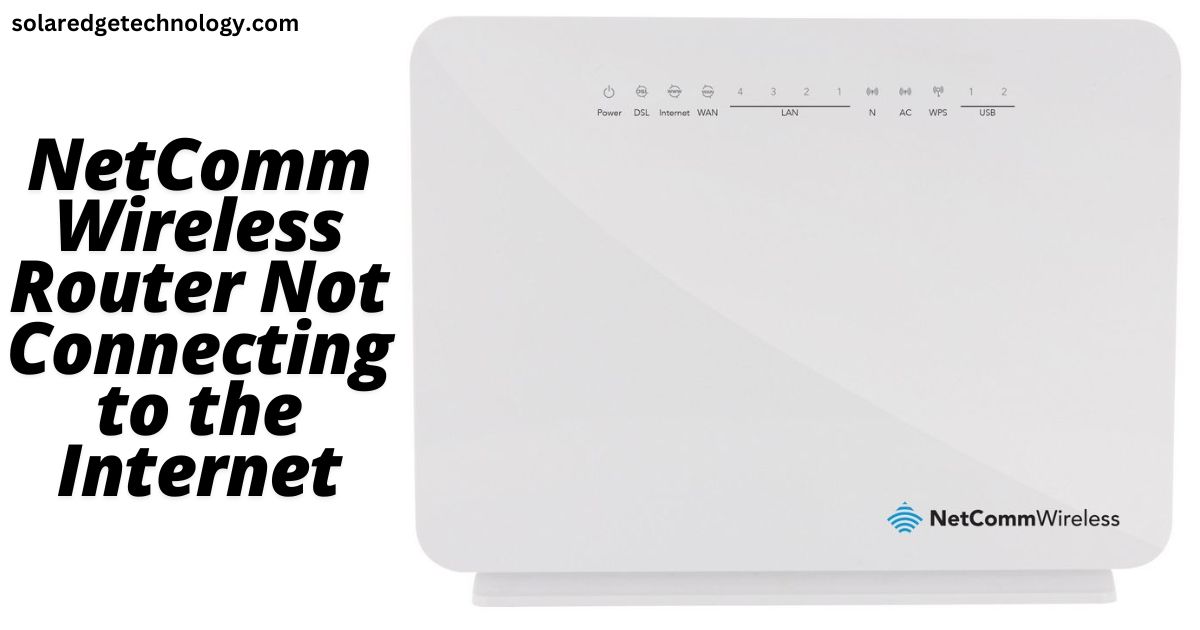Experiencing issues with your NetComm wireless router not connecting to the internet can be incredibly frustrating, especially in an era where a stable connection is essential for work, streaming, and staying connected. This comprehensive troubleshooting guide will help you diagnose and resolve the issue step-by-step.
Understanding the Problem: Why Is Your NetComm Router Not Connecting?
When your NetComm wireless router fails to connect to the internet, the issue could stem from:
- ISP (Internet Service Provider) Issues: Service outages or problems with your ISP can prevent your router from establishing an internet connection.
- Hardware Malfunction: Faulty cables, damaged ports, or internal hardware issues in your router can disrupt connectivity.
- Configuration Errors: Incorrect router settings, such as an improperly configured WAN or DNS, can cause connection issues.
- Firmware Issues: Outdated or corrupted firmware may result in router instability.
- Interference or Signal Issues: Wi-Fi interference from other devices or weak signal strength may cause connectivity drops.
- Account-Related Problems: Unpaid bills or ISP account restrictions can block your internet access.
Step-by-Step Troubleshooting Guide
Follow these actionable steps to resolve your NetComm wireless router’s internet connectivity problems:
1. Check for ISP Outages
Start by verifying if the issue lies with your ISP:
- Visit your ISP’s website or contact their support to check for outages.
- Use your ISP’s app (if available) to view real-time status updates.
- Try connecting a device directly to the modem via Ethernet to confirm whether the internet is active.
If the issue persists with the modem, contact your ISP for assistance.
2. Restart Your Router and Modem
A simple reboot often resolves temporary glitches. Follow these steps:
- Turn off both the router and modem.
- Wait for at least 30 seconds.
- Turn on the modem first and wait until it’s fully initialized.
- Turn on the router and test the connection.
3. Inspect Physical Connections
Ensure all cables are securely connected:
- Check the Ethernet cable between your modem and router.
- Inspect the power cable for any damage.
- Verify that the WAN (Internet) port on your router is connected correctly.
4. Verify Router Settings
Log into your router’s web interface to check the configuration:
- Access the admin panel by typing the router’s IP address (e.g.,
192.168.1.1) in a web browser. - Use the default login credentials (often found on a label on your router).
- Navigate to Internet Settings and ensure:
- The correct connection type (PPPoE, Dynamic IP, etc.) is selected.
- Your ISP’s credentials (if required) are correctly entered.
5. Update Router Firmware
Outdated firmware can cause instability. To update:
- Visit the official NetComm website.
- Download the latest firmware for your router model.
- Log into the router’s admin panel and navigate to the Firmware Upgrade section.
- Follow the on-screen instructions to complete the update.
6. Reset Your Router to Factory Settings
If configuration issues persist, a factory reset may resolve them:
- Locate the Reset button on your router (usually a small pinhole).
- Press and hold the button for 10-30 seconds using a paperclip.
- Reconfigure the router’s settings through the admin panel after the reset.
7. Minimize Wi-Fi Interference
Wi-Fi performance can be affected by interference from other devices:
- Place your router in a central location, away from walls and electronic devices.
- Change the Wi-Fi channel in the admin panel to avoid overlapping with neighboring networks.
- Upgrade to a dual-band or tri-band router for better performance in congested areas.
8. Test with Another Device
Verify if the problem is specific to a particular device:
- Connect multiple devices (e.g., phone, laptop) to the Wi-Fi.
- If one device works while another doesn’t, troubleshoot the problematic device’s network settings.
9. Contact NetComm Support
If all else fails, reach out to NetComm’s technical support team:
- Provide detailed information about your issue.
- Have your router’s model and serial number ready for reference.
Preventive Measures for Stable Connectivity
To avoid future disruptions, consider these tips:
- Perform Regular Updates: Keep your router’s firmware up-to-date.
- Secure Your Network: Use a strong password and enable WPA3 encryption.
- Monitor Network Usage: Avoid excessive bandwidth usage by monitoring connected devices.
- Invest in a Quality Router: If your router is outdated, upgrading to a modern model with advanced features can improve reliability.
Key Takeaways
- Most NetComm router connectivity issues can be resolved by addressing ISP outages, restarting devices, checking configurations, and updating firmware.
- Regular maintenance and network security practices can prevent future problems.
- When in doubt, don’t hesitate to contact NetComm support or your ISP for assistance.
